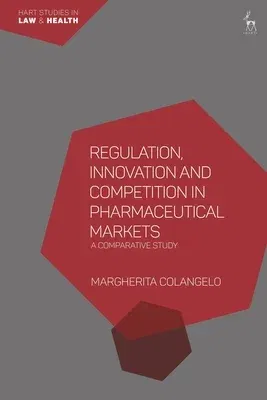Margherita Colangelo
(Author)Regulation, Innovation and Competition in Pharmaceutical Markets: A Comparative StudyHardcover, 20 April 2023

Qty
1
Turbo
Ships in 2 - 3 days
In Stock
Free Delivery
Cash on Delivery
15 Days
Free Returns
Secure Checkout

Part of Series
Hart Studies in Law and Health
Print Length
256 pages
Language
English
Publisher
Bloomsbury Publishing PLC
Date Published
20 Apr 2023
ISBN-10
1509965513
ISBN-13
9781509965519
Description
Product Details
Author:
Book Format:
Hardcover
Country of Origin:
US
Date Published:
20 April 2023
Dimensions:
23.39 x
15.6 x
1.6 cm
ISBN-10:
1509965513
ISBN-13:
9781509965519
Language:
English
Location:
New York
Pages:
256
Publisher:
Weight:
539.77 gm